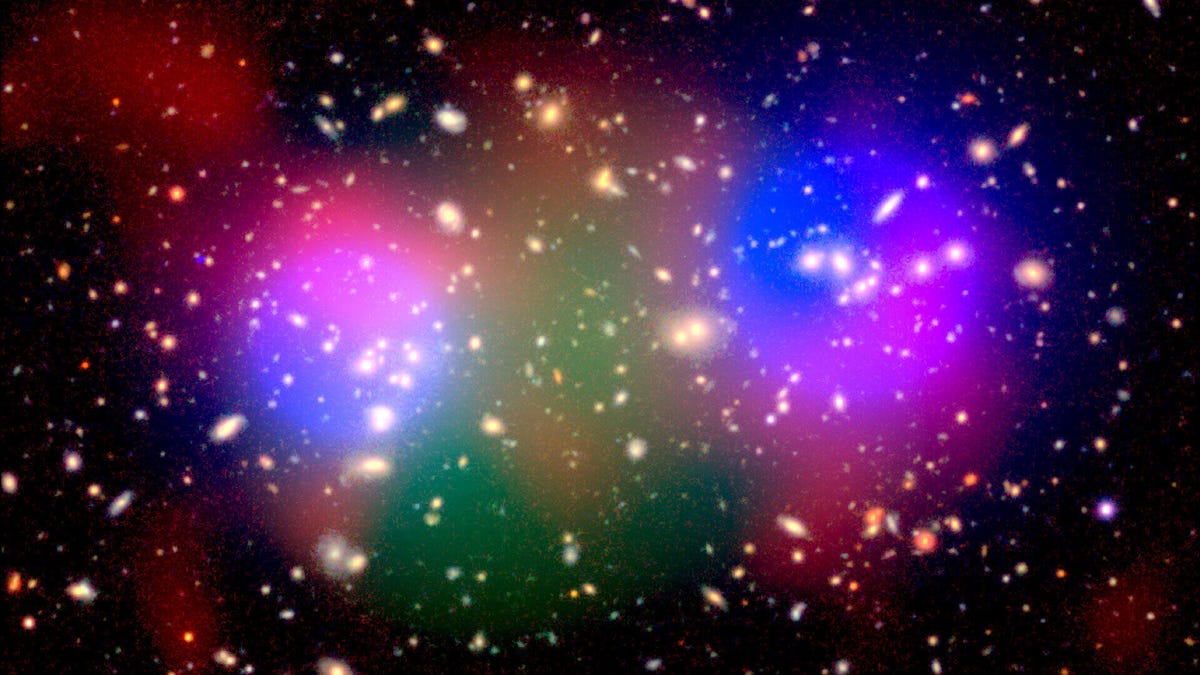This 'shock heated' galaxy cluster is 25 times hotter than our sun's core
Hot damn, it's a cosmic furnace.
Galaxies of a feather flock together, and sometimes they turn into infernos. It might look like a 1960s sci-fi TV show special effect, but a colorful new image of a galaxy cluster reveals a "cosmic furnace" and has caught the eye of European Space Agency scientists.
A galaxy cluster is exactly what it sounds like: a collection that can contain thousands of galaxies. In this wild image, sub-clusters of galaxies (seen in bluish-purple) are colliding into each other, ramping up the temperature of the gases around them in a process called "shock heating."
Normally, these gases are about 2.7 times hotter than our sun's core, but this cluster is feeling the heat at 25 times hotter than the core of the sun, ESA said in statement on Thursday.
It took a complex collective effort -- from ESA's XMM-Newton X-ray Observatory, the National Astronomical Observatory of Japan's Subaru Telescope (which sees in optical-infrared) and the Green Bank Telescope (which picks up radio emissions) -- to create the remarkable image.
The colors highlight the features within the cluster. Orange marks individual galaxies. Gases show up in green (hot and dense) and red (hot and thin). The spots where green changes to red indicate where the brutal heating process is happening.
"The international collaboration of the scientists, instruments, and datasets has captured this new and exciting aspect of structure formation," the Green Bank Observatory said in a statement.
We don't have to worry about getting burned where we are. The galaxy cluster, named HSC J023336-053022 (XLSSC 105), is four billion light-years from Earth. Whew.


